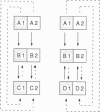Abstract
Three experiments examined a discrimination training sequence that led to emergent simple discrimination in human subjects. The experiments differed primarily in their subject populations. Normally capable adults served in the first experiment, preschool children in the second, and mentally retarded adults in the third. In all experiments, subjects learned a simple simultaneous discrimination: When visual stimuli A1 and A2 were displayed together, reinforcers followed selections of A1, the S+, but not A2, the S-. The subjects also learned a conditional discrimination taught with an arbitrary visual-visual matching-to-sample procedure. Comparisons were two additional visual stimuli, B1 and B2, and samples were A1 and A2. Reinforcers followed selections of B1 in the presence of A1 and of B2 in the presence of A2. After the simple-discrimination and conditional-discrimination baselines had been acquired, B1 and B2 were displayed alone (without a sample) on probe trials. Subjects had never been taught explicitly how to respond to such displays. Nonetheless, they almost always selected B1, which was involved in a conditional relation with A1, the stimulus that served as S+ on the simple-discrimination trials. This outcome suggested the formation of stimulus classes during conditional-discrimination training. Through class formation, B1 and B2 had apparently acquired stimulus functions similar to those shown by A1 and A2 on simple-discrimination trials, thereby leading to emergent selections of B1 on the probes.
Full text
PDF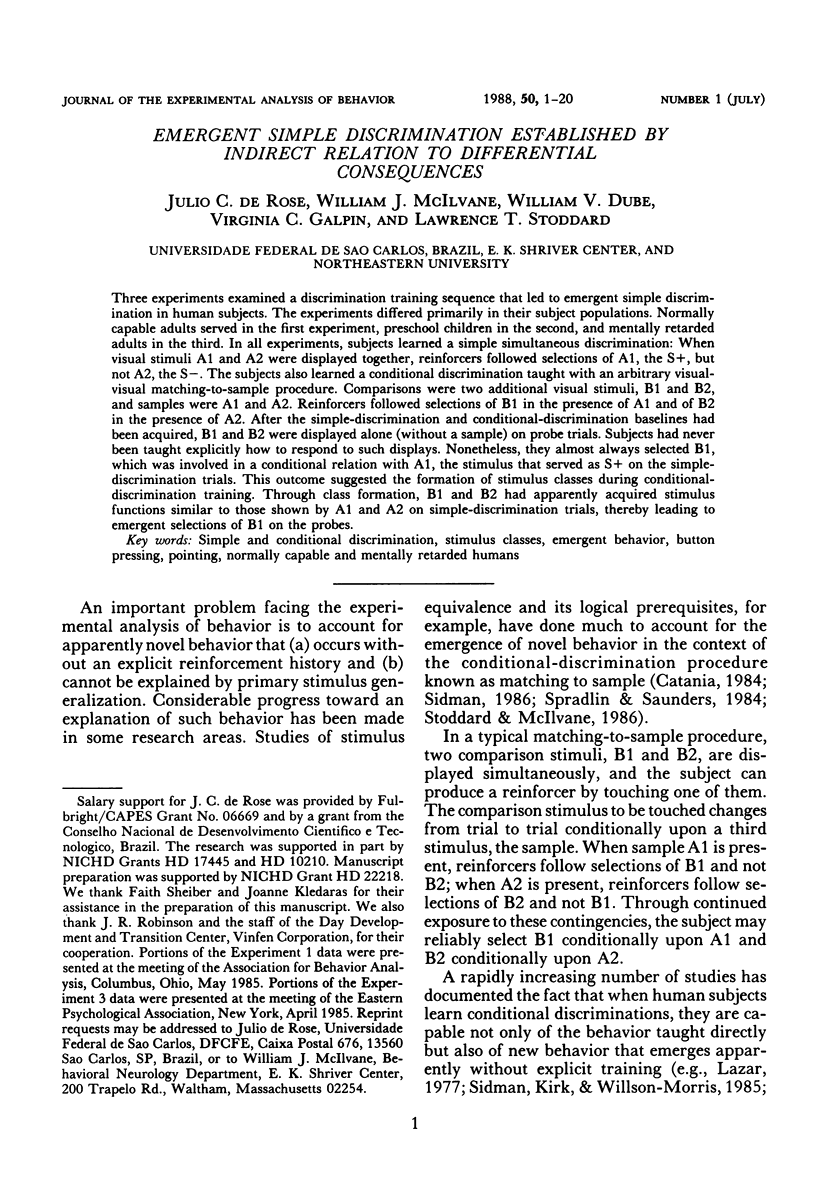
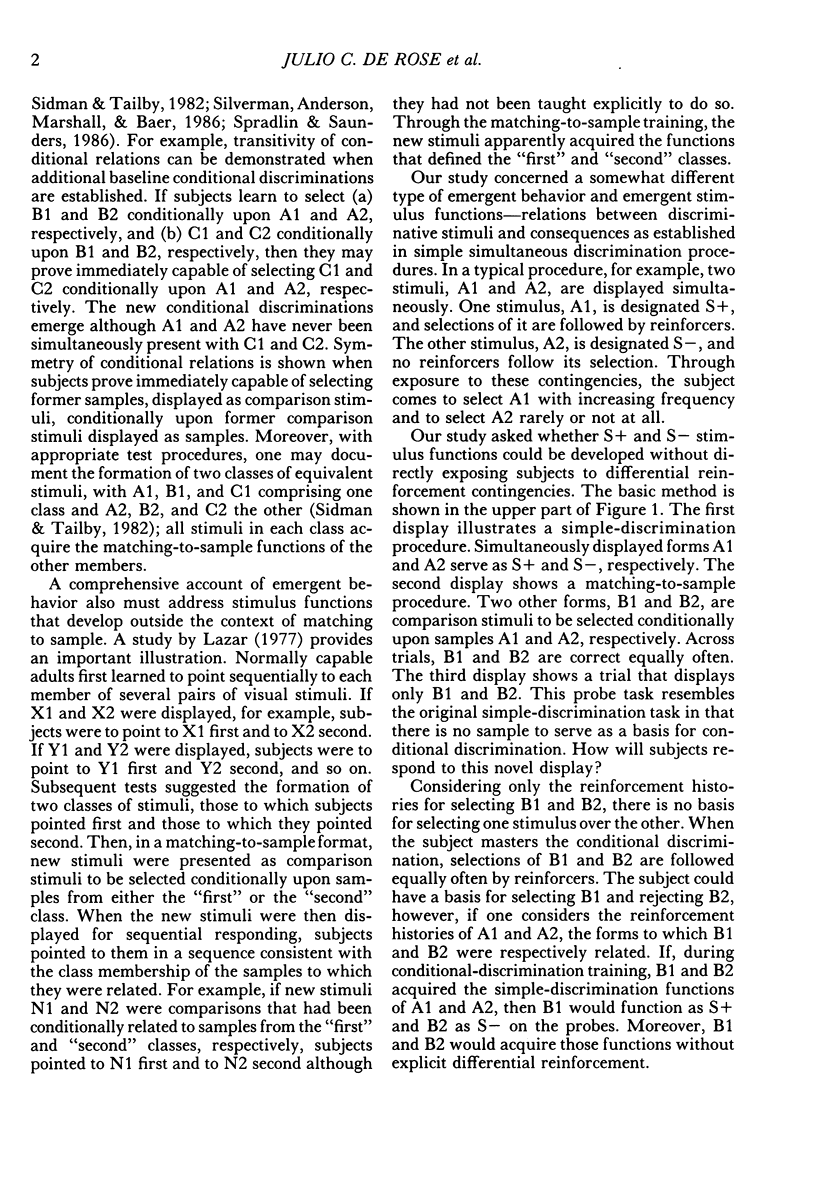
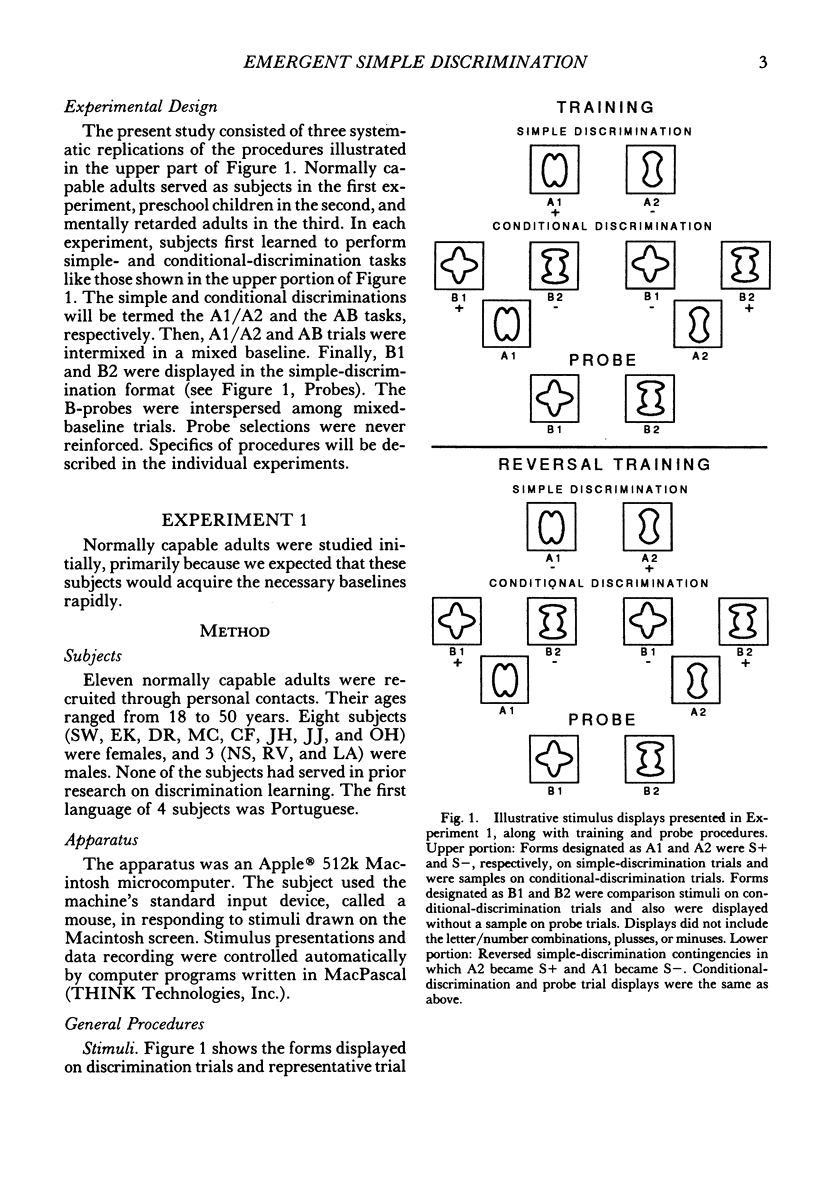
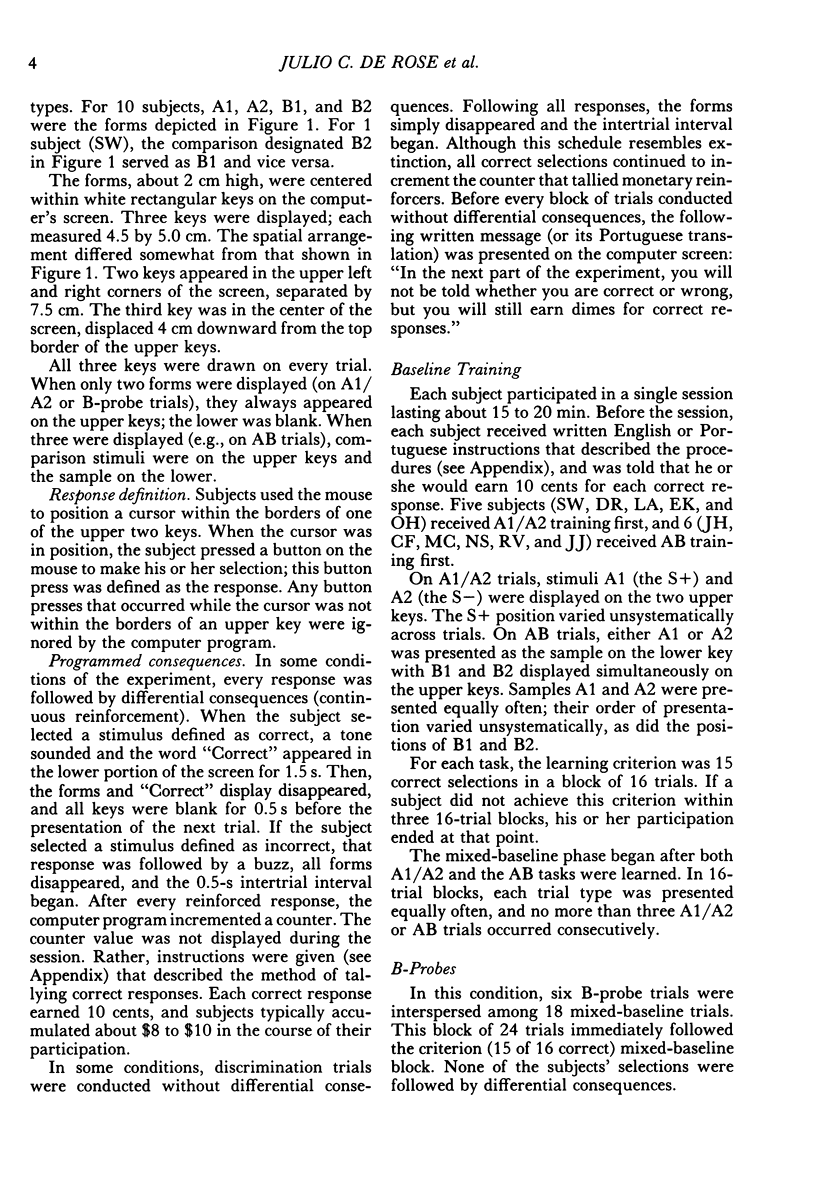
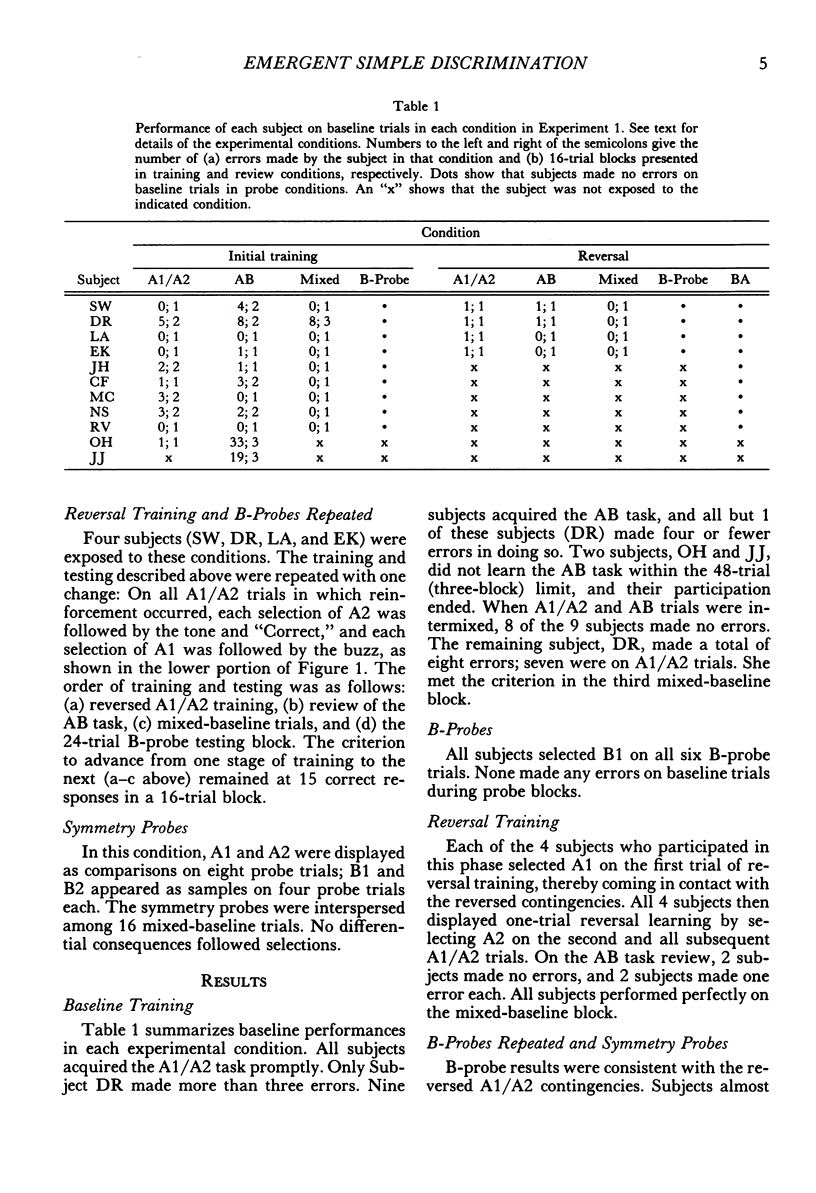
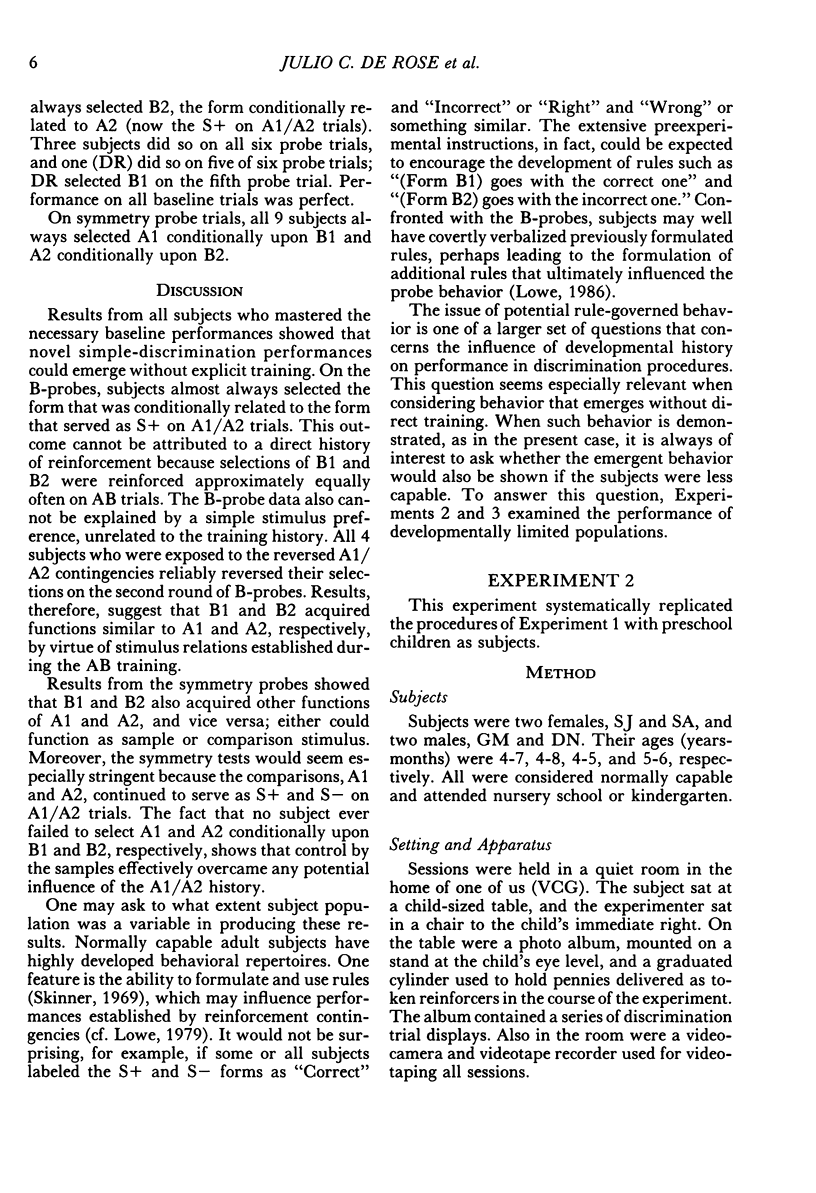
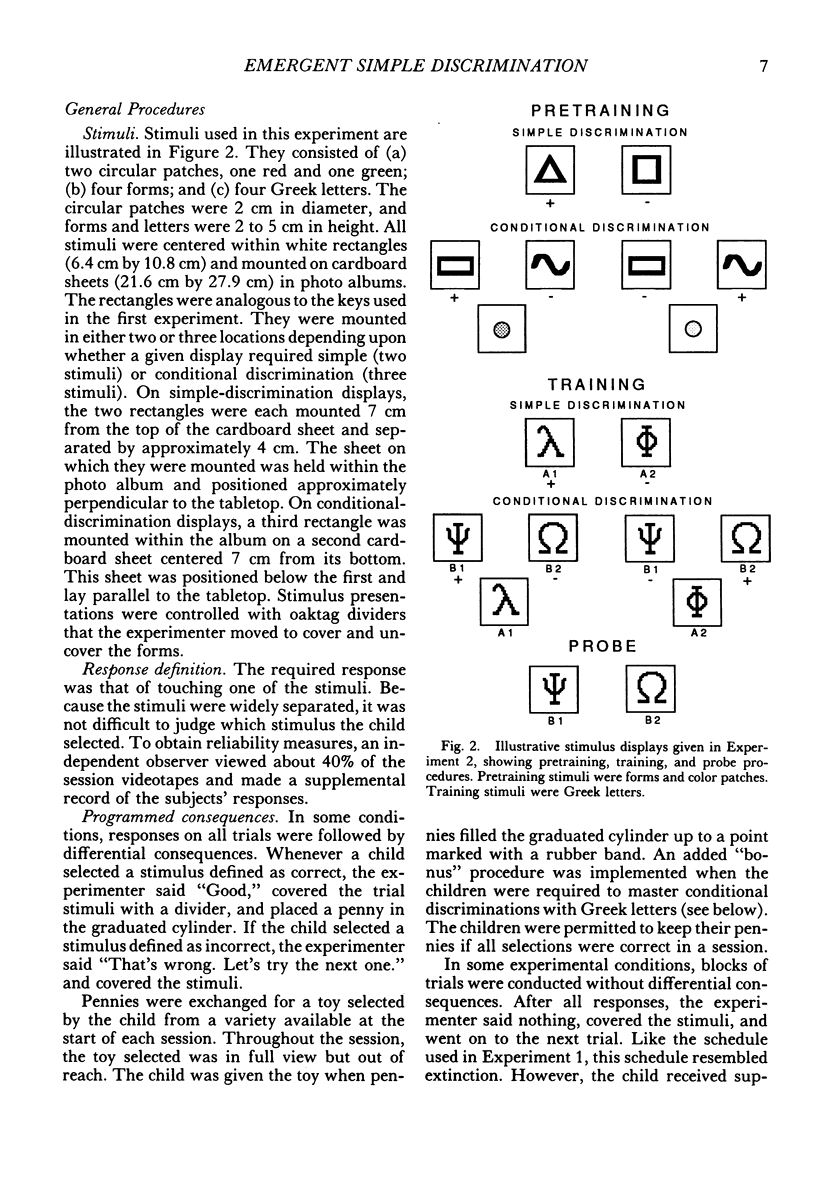
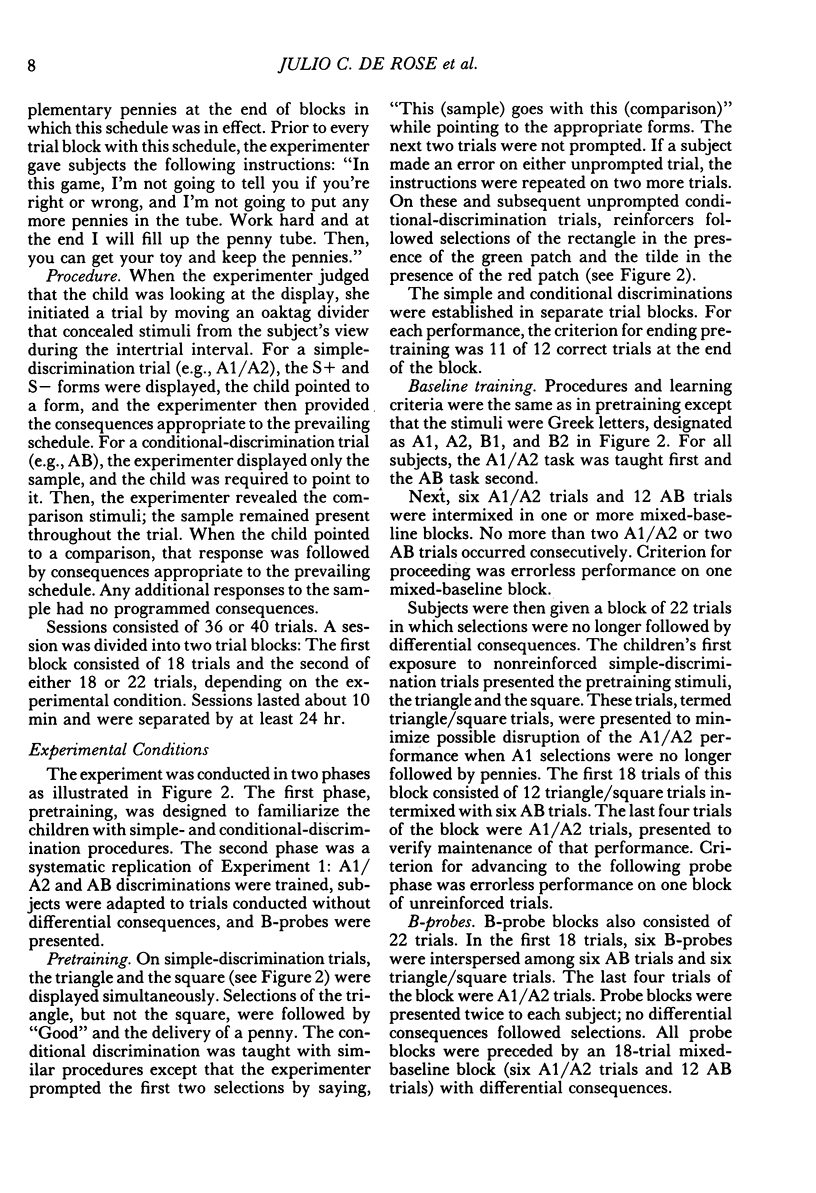
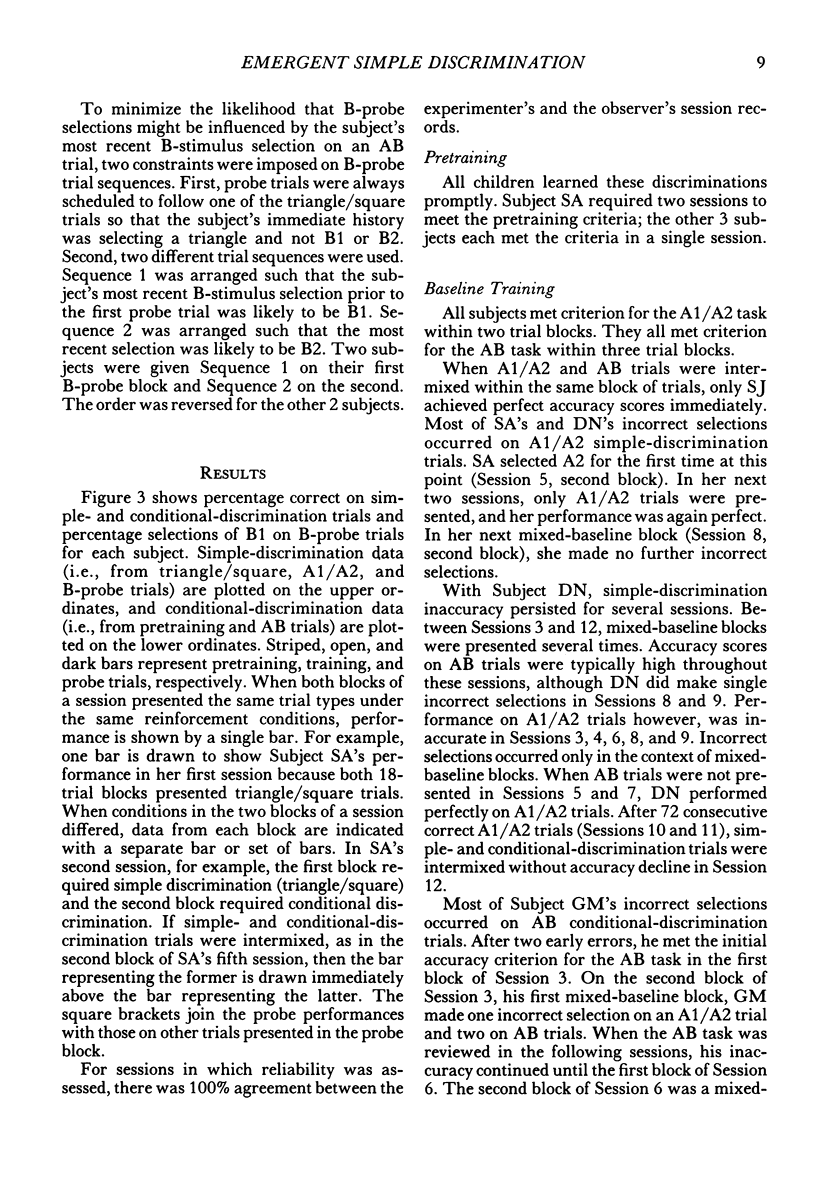
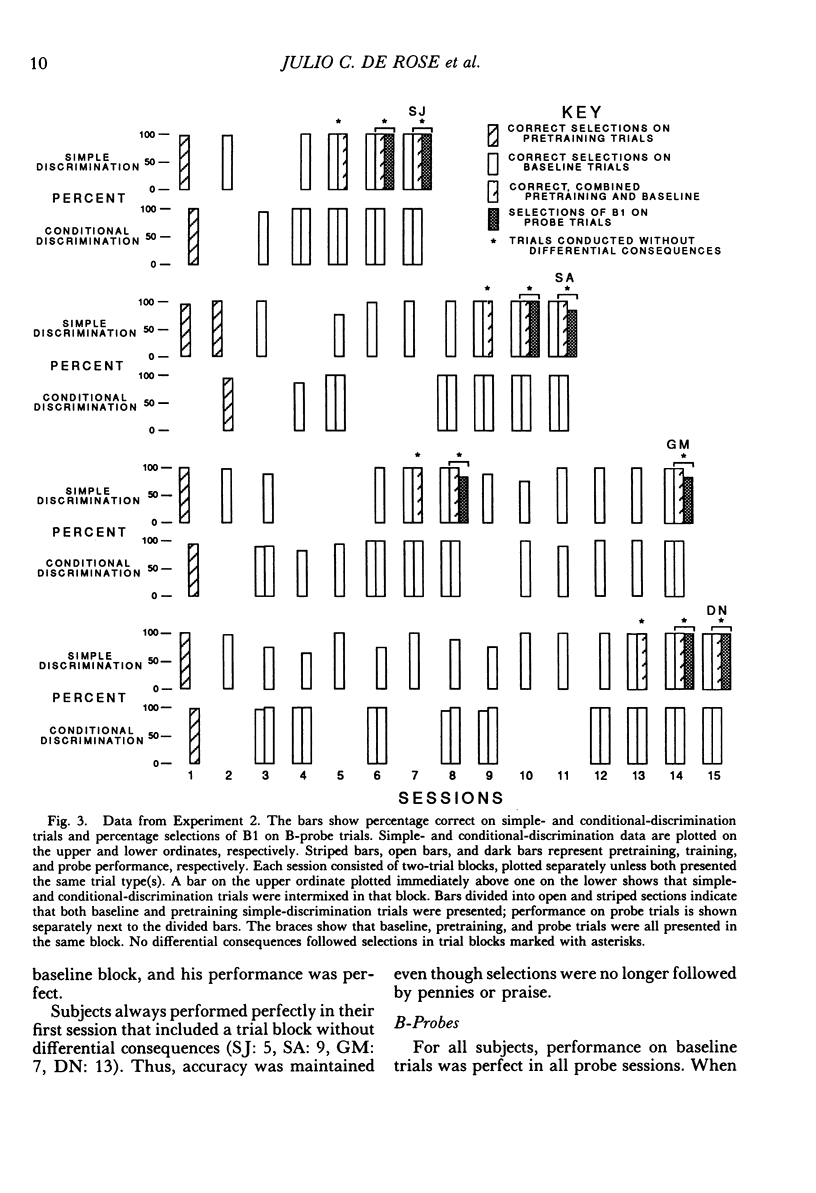
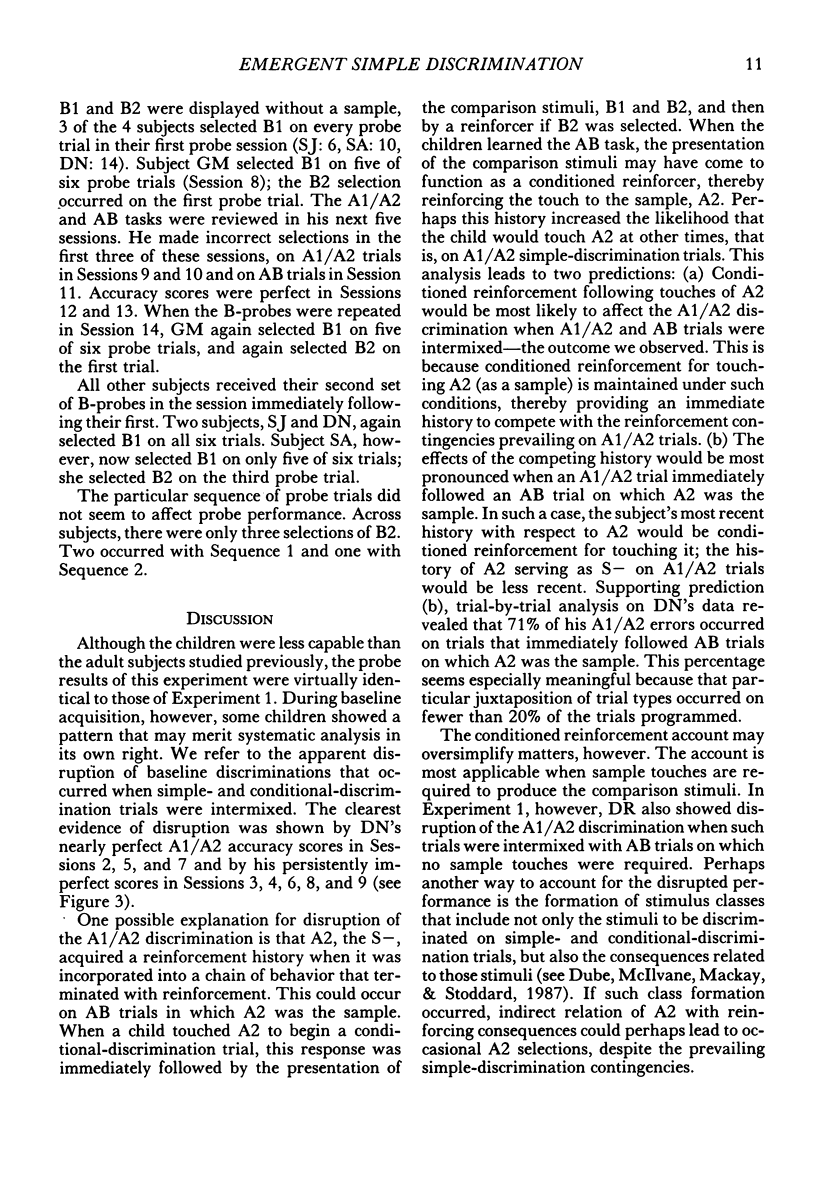
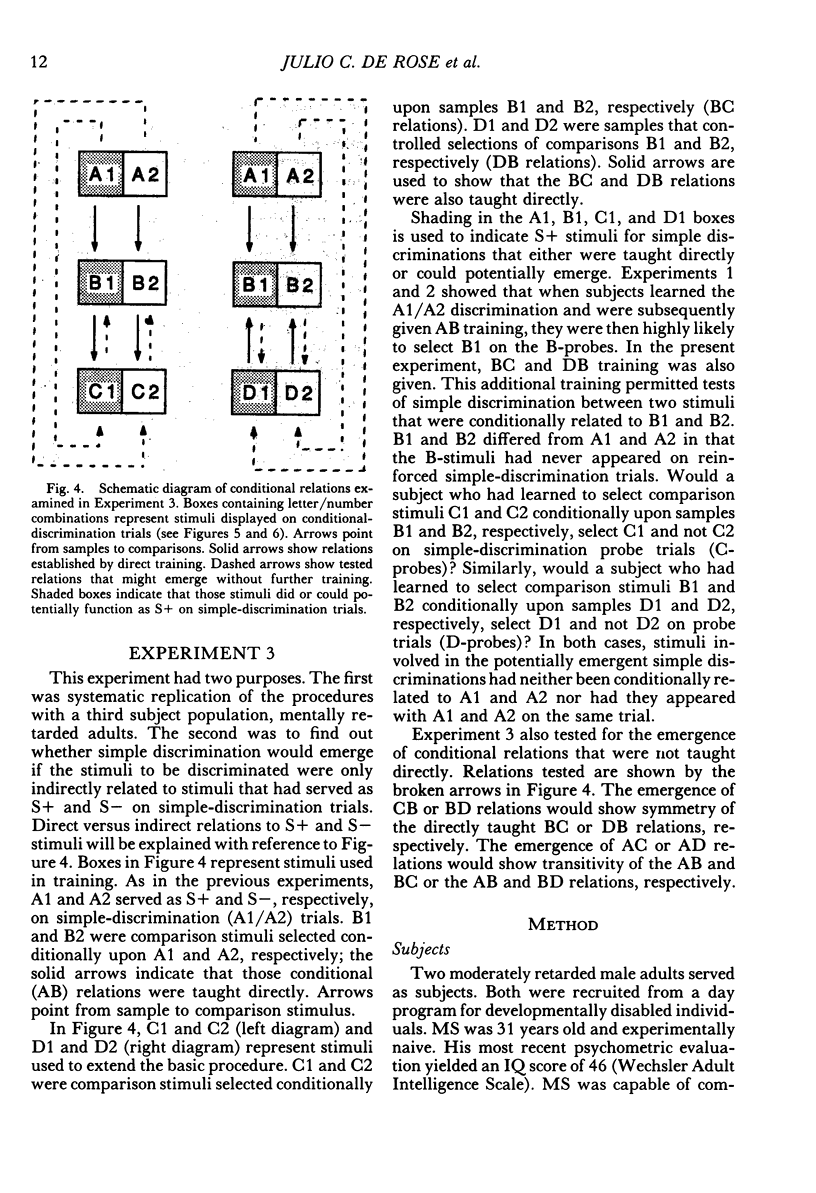
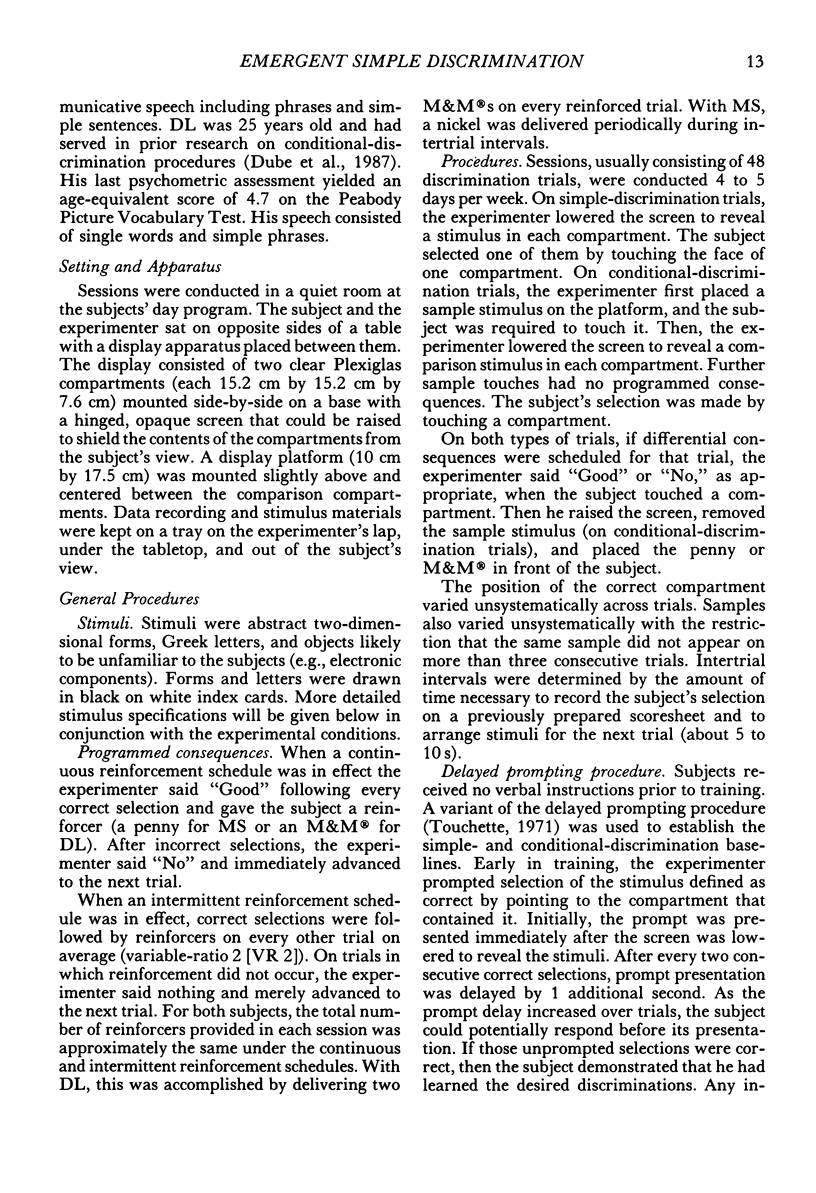
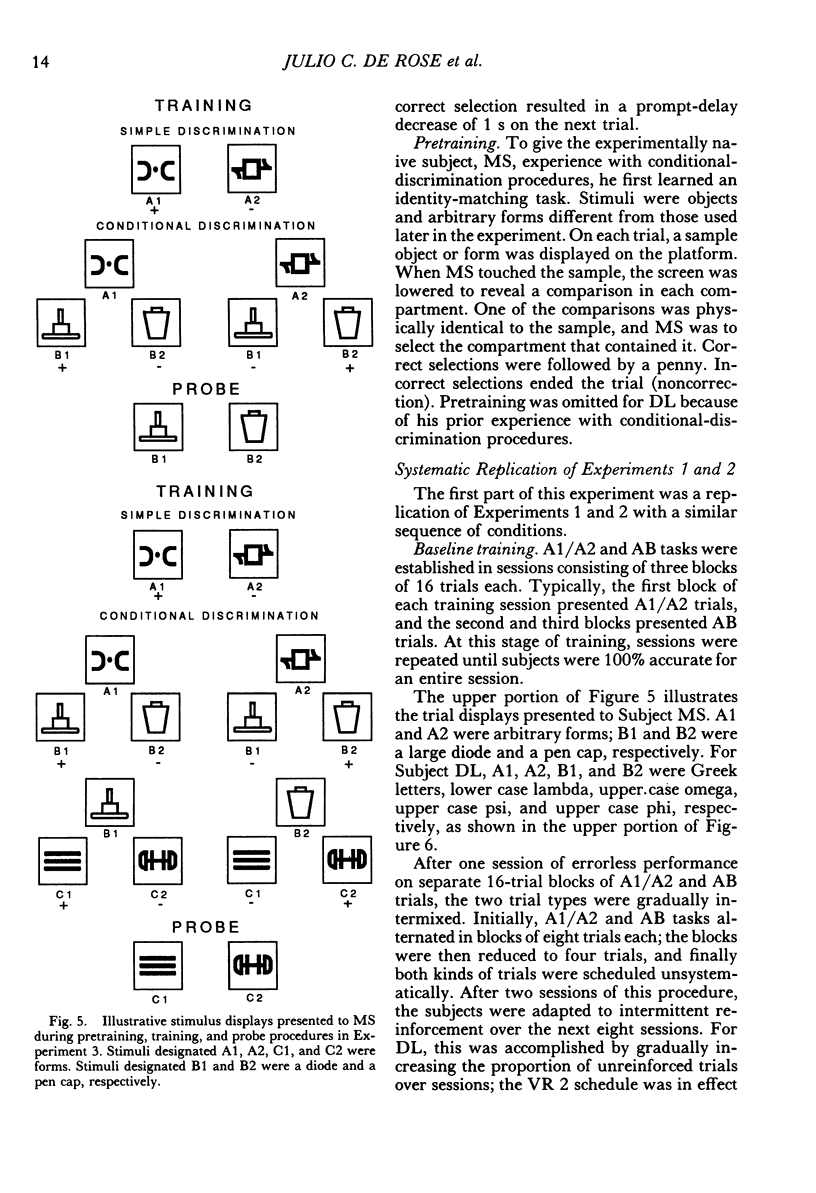
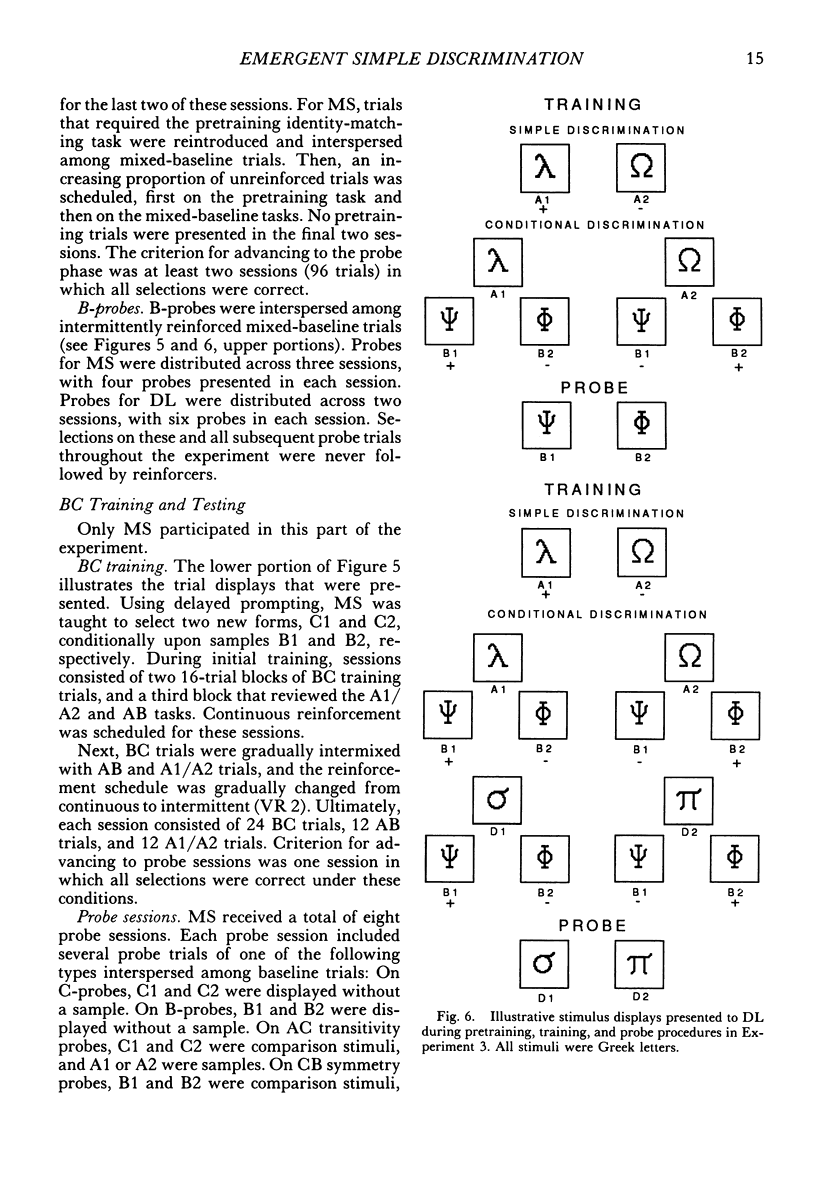
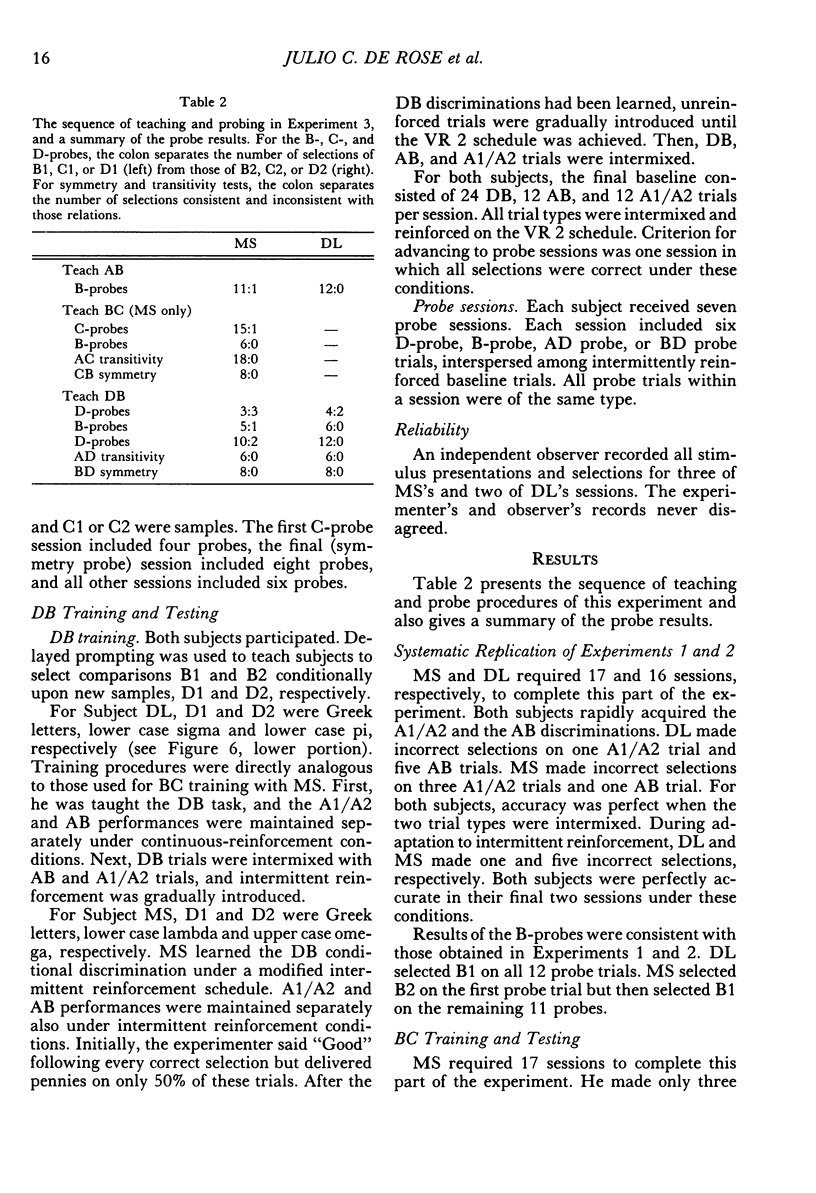
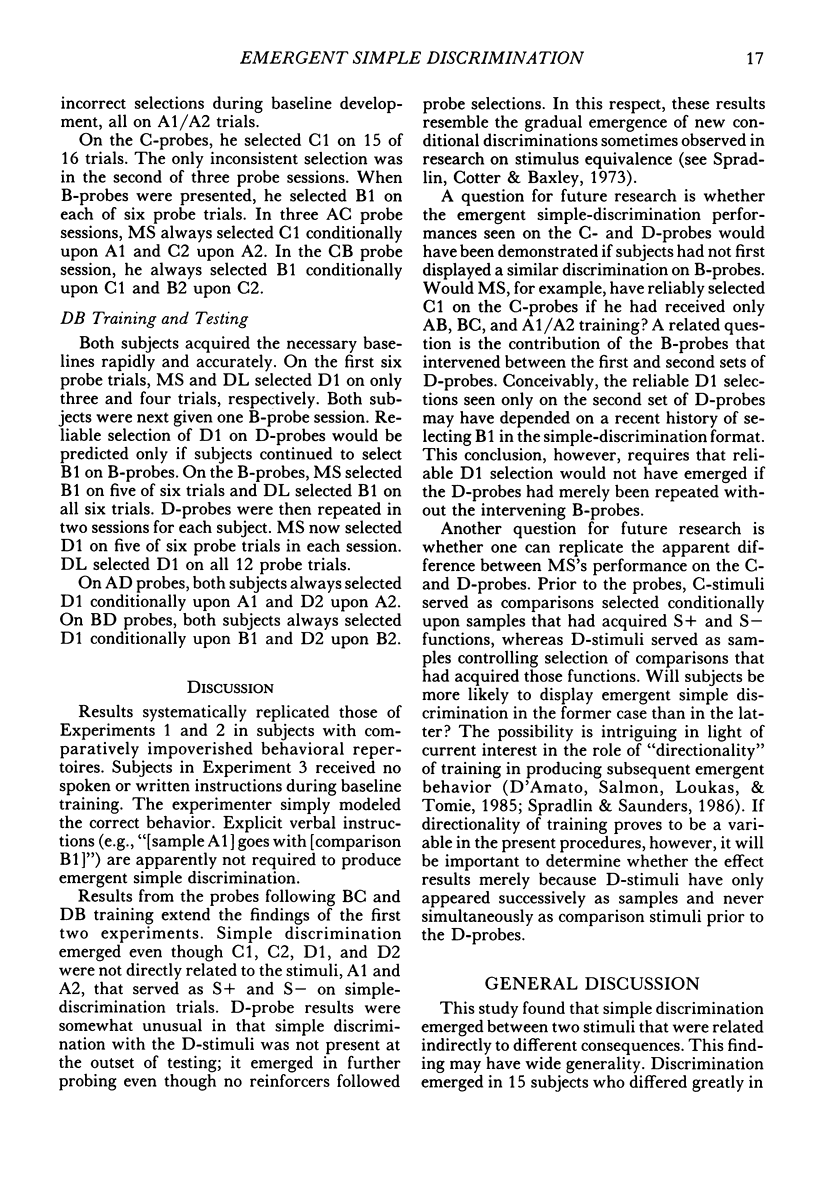
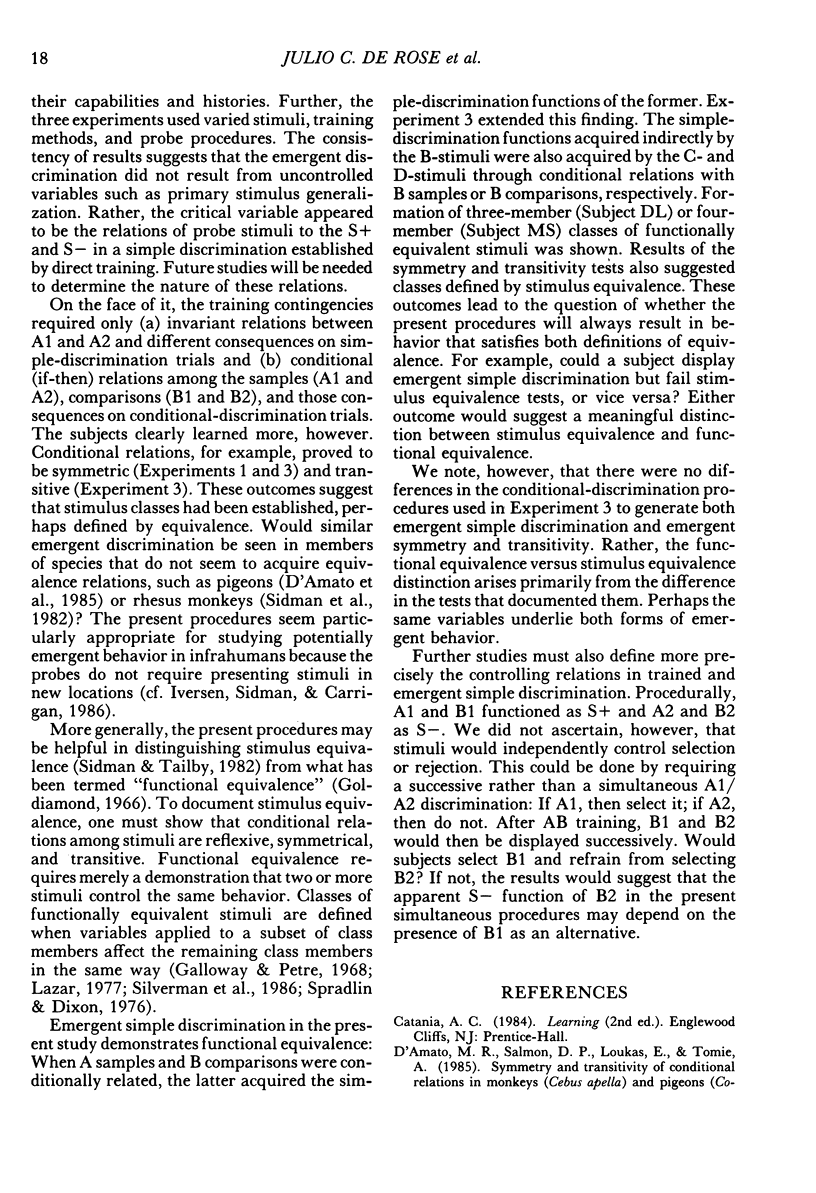
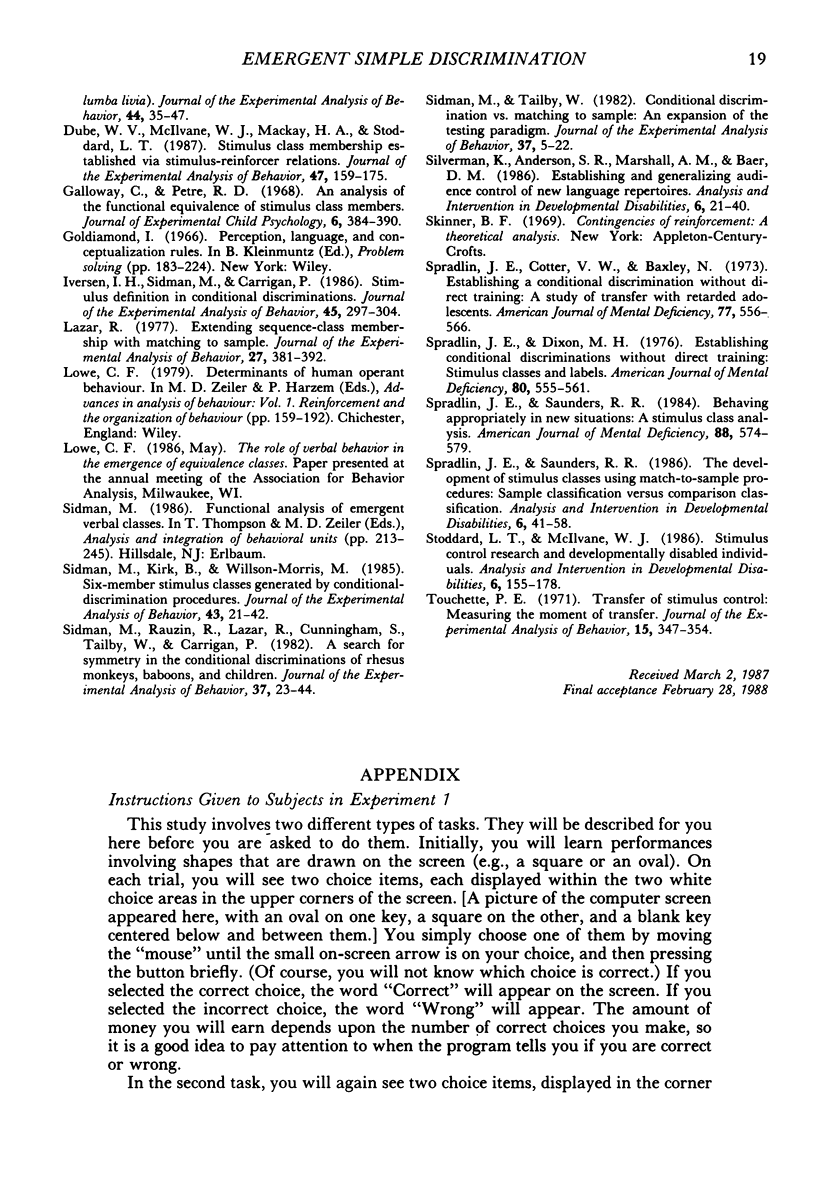
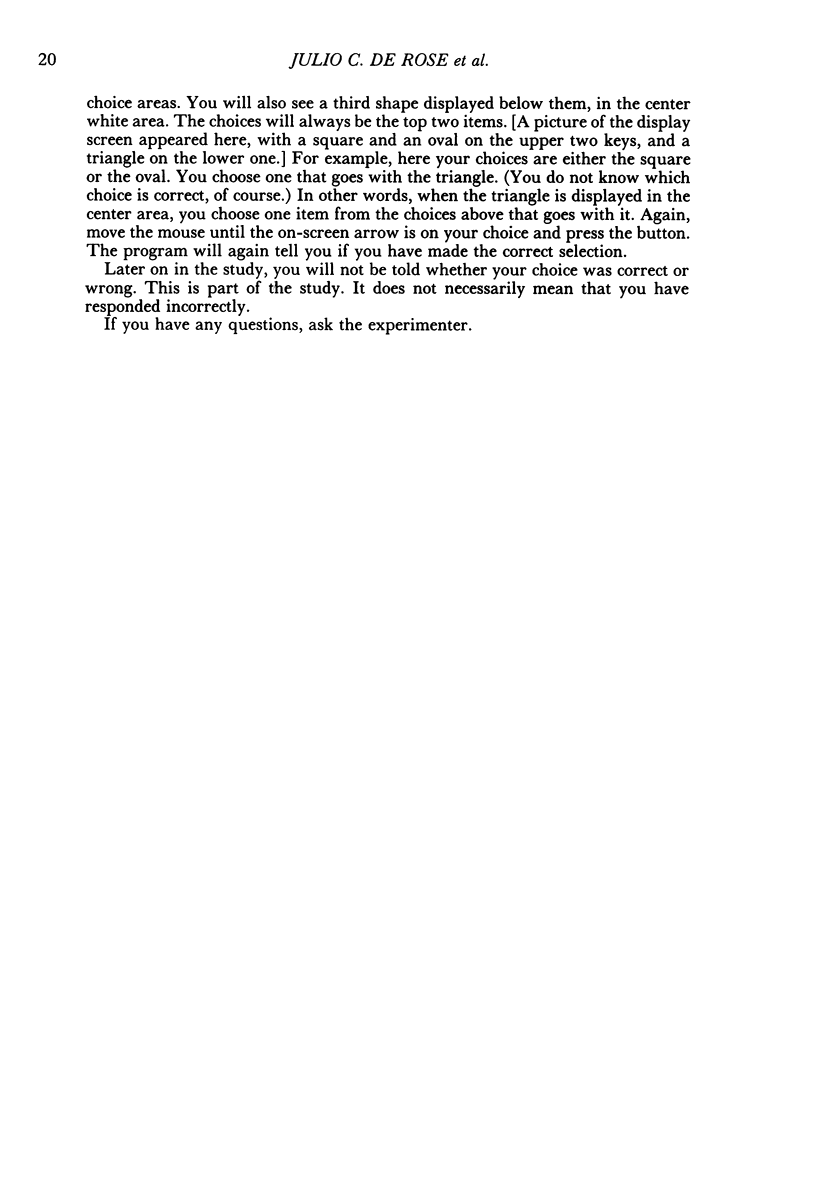
Images in this article
Selected References
These references are in PubMed. This may not be the complete list of references from this article.
- D'Amato M. R., Salmon D. P., Loukas E., Tomie A. Symmetry and transitivity of conditional relations in monkeys (Cebus apella) and pigeons (Columba livia). J Exp Anal Behav. 1985 Jul;44(1):35–47. doi: 10.1901/jeab.1985.44-35. [DOI] [PMC free article] [PubMed] [Google Scholar]
- Dube W. V., McIlvane W. J., Mackay H. A., Stoddard L. T. Stimulus class membership established via stimulus-reinforcer relations. J Exp Anal Behav. 1987 Mar;47(2):159–175. doi: 10.1901/jeab.1987.47-159. [DOI] [PMC free article] [PubMed] [Google Scholar]
- Galloway C., Petre R. D. An analysis of the functional equivalence of stimulus class members. J Exp Child Psychol. 1968 Sep;6(3):384–390. doi: 10.1016/0022-0965(68)90119-7. [DOI] [PubMed] [Google Scholar]
- Iversen I. H., Sidman M., Carrigan P. Stimulus definition in conditional discriminations. J Exp Anal Behav. 1986 May;45(3):297–304. doi: 10.1901/jeab.1986.45-297. [DOI] [PMC free article] [PubMed] [Google Scholar]
- Lazar R. Extending sequence-class membership with matching to sample. J Exp Anal Behav. 1977 Mar;27(2):381–392. doi: 10.1901/jeab.1977.27-381. [DOI] [PMC free article] [PubMed] [Google Scholar]
- Sidman M., Kirk B., Willson-Morris M. Six-member stimulus classes generated by conditional-discrimination procedures. J Exp Anal Behav. 1985 Jan;43(1):21–42. doi: 10.1901/jeab.1985.43-21. [DOI] [PMC free article] [PubMed] [Google Scholar]
- Sidman M., Rauzin R., Lazar R., Cunningham S., Tailby W., Carrigan P. A search for symmetry in the conditional discriminations of rhesus monkeys, baboons, and children. J Exp Anal Behav. 1982 Jan;37(1):23–44. doi: 10.1901/jeab.1982.37-23. [DOI] [PMC free article] [PubMed] [Google Scholar]
- Sidman M., Tailby W. Conditional discrimination vs. matching to sample: an expansion of the testing paradigm. J Exp Anal Behav. 1982 Jan;37(1):5–22. doi: 10.1901/jeab.1982.37-5. [DOI] [PMC free article] [PubMed] [Google Scholar]
- Spradlin J. E., Cotter V. W., Baxley N. Establishing a conditional discrimination without direct training: a study of transfer with retarded adolescents. Am J Ment Defic. 1973 Mar;77(5):556–566. [PubMed] [Google Scholar]
- Spradlin J. E., Dixon M. H. Establishing conditional discriminations without direct training: stimulus classes and labels. Am J Ment Defic. 1976 Mar;80(5):555–561. [PubMed] [Google Scholar]
- Spradlin J. E., Saunders R. R. Behaving appropriately in new situations: a stimulus class analysis. Am J Ment Defic. 1984 Mar;88(5):574–579. [PubMed] [Google Scholar]
- Touchette P. E. Transfer of stimulus control: measuring the moment of transfer. J Exp Anal Behav. 1971 May;15(3):347–354. doi: 10.1901/jeab.1971.15-347. [DOI] [PMC free article] [PubMed] [Google Scholar]



